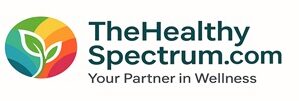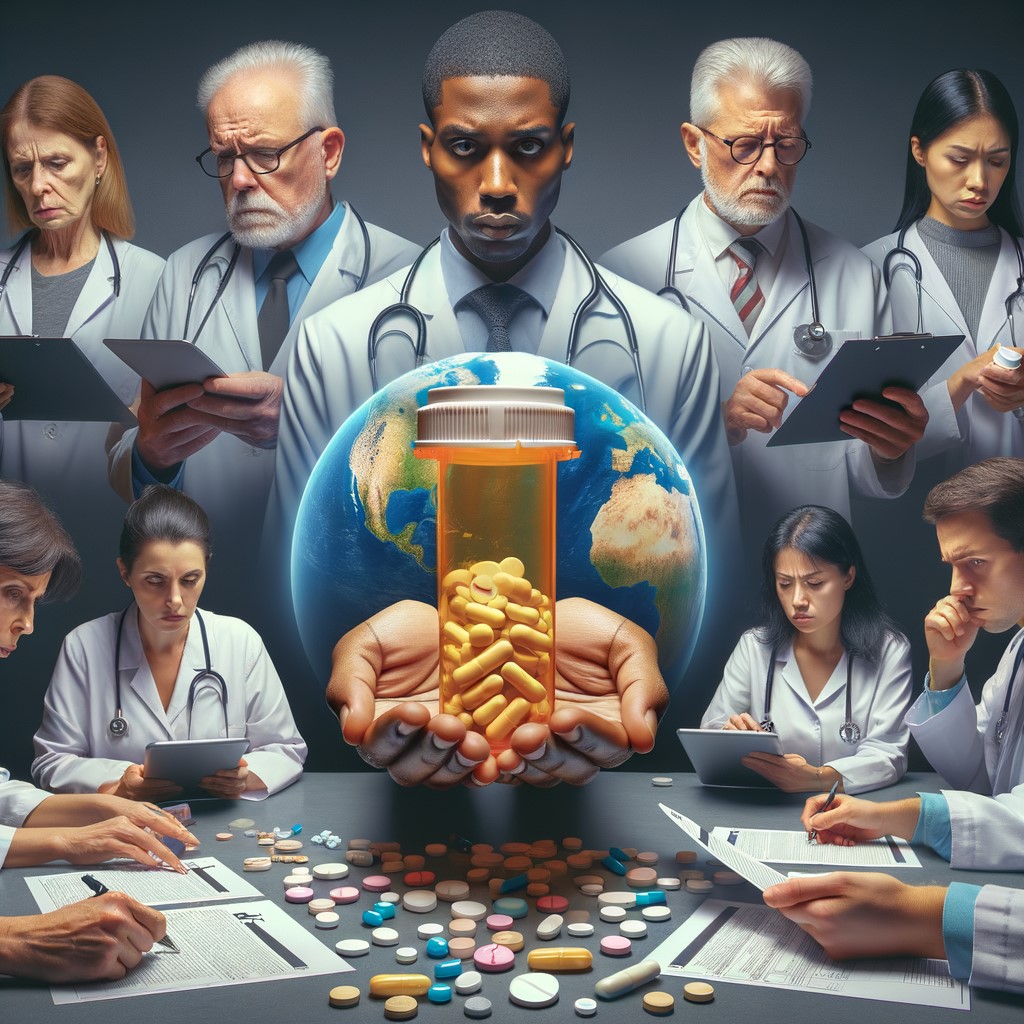Prescription drug abuse has emerged as a critical public health crisis, affecting individuals, families, and communities worldwide. Unlike the legitimate use of medications to treat health conditions, prescription drug abuse involves the misuse of legally obtained medications in ways that can lead to severe health, social, and legal consequences.
This issue encompasses the intentional misuse of drugs such as opioids, benzodiazepines, stimulants, and sleep aids, each carrying a high potential for dependency and adverse effects. Understanding the complexities of prescription drug abuse—ranging from its definition and key indicators to the underlying causes, impact on the brain and body, and available treatment options—is essential for developing effective prevention and intervention strategies.
This comprehensive exploration delves into the multifaceted nature of prescription drug abuse, highlighting the roles of healthcare providers, recognizing warning signs, and proposing solutions to mitigate this pervasive threat.
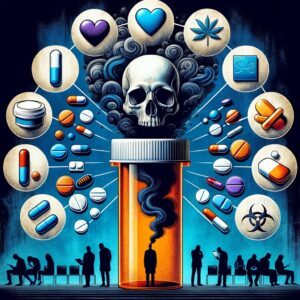
Unlock Peak Performance—Personalized Nutrition Starts Here.
1. Defining Prescription Drug Abuse: What It Is and Key Indicators
Prescription drug abuse refers to the intentional misuse of medications that healthcare professionals legally prescribe. This misuse involves taking a drug in a manner or dose other than prescribed, using someone else’s prescription, or taking the medication for the experience or feeling it induces. Unlike the legitimate use of prescription medications to treat specific health conditions, abuse disregards medical guidelines and can lead to significant health, social, and legal consequences.
Key indicators of prescription drug abuse encompass a variety of behavioral, physical, and psychological signs. Behavioral indicators may include frequently requesting early refills, doctor shopping (visiting multiple healthcare providers to obtain prescriptions), and obtaining medications from non-medical sources. Individuals may also exhibit secretive behaviors, such as hiding medications or being evasive about their drug use.
Physically, signs of prescription drug abuse can vary depending on the substance but often include noticeable changes in appearance, such as weight loss or fluctuations, unusual body odors, and dilated or constricted pupils. There may also be signs of impaired coordination, drowsiness, or sudden changes in energy levels. In cases of injection use, track marks or frequent vein punctures may be present.
Psychological indicators are equally significant and can manifest as mood swings, increased anxiety, depression, or unusual euphoria. Cognitive impairments, including difficulties concentrating, memory lapses, and impaired judgment, are also common.
Additionally, individuals may prioritize obtaining and using the drug over essential activities and responsibilities, leading to deterioration in personal relationships, work performance, and social interactions.
Recognizing these key indicators is crucial for early intervention and prevention of the adverse effects associated with prescription drug abuse. Healthcare providers, family members, and peers play a pivotal role in identifying these signs and facilitating access to appropriate treatment and support services. Understanding the definition and indicators of prescription drug abuse enables a comprehensive approach to addressing this complex and pervasive public health issue.
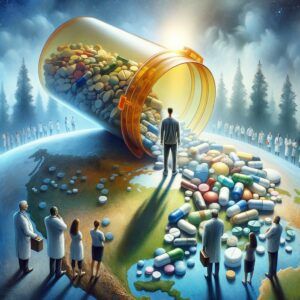
Nourish Your Body, Fuel Your Potential—Start with GreatLife Supplements.
2. Commonly Abused Prescription Medications: Identifying High-Risk Drugs
Prescription drug abuse encompasses the misuse of medications that are legally prescribed for various medical conditions. Certain classes of these medications are more prone to abuse due to their psychoactive effects, potential for dependence, and availability. Among the most commonly abused prescription drugs are opioids, benzodiazepines, stimulants, and certain sleep aids.
Opioids are perhaps the most widely misused prescription medications. This class includes drugs such as oxycodone, hydrocodone, morphine, and fentanyl. Prescribed primarily for pain management, opioids interact with the brain’s reward system, producing feelings of euphoria and relaxation. Their high potential for addiction and overdose makes them particularly risky when misused.
Benzodiazepines, including medications like alprazolam (Xanax), diazepam (Valium), and clonazepam (Klonopin), are prescribed to treat anxiety, insomnia, and seizures. These drugs have sedative effects and can produce feelings of calmness and drowsiness. Prolonged use can lead to tolerance, dependence, and withdrawal symptoms, increasing the likelihood of abuse.
Stimulants such as amphetamine (Adderall), methylphenidate (Ritalin), and dexmethylphenidate (Focalin) are commonly prescribed for attention-deficit/hyperactivity disorder (ADHD) and certain sleep disorders. These medications enhance focus, attention, and energy levels. However, their ability to increase alertness and reduce fatigue can lead to misuse, particularly among individuals seeking cognitive enhancement or recreational effects.
Sleep aids like zolpidem (Ambien) and eszopiclone (Lunesta) are prescribed for treating insomnia. These medications can induce deep sleep and relaxation but may also cause dependence and cognitive impairment when taken inappropriately.
Additionally, some combination medications that include multiple active ingredients, such as those containing both opioids and acetaminophen, pose significant abuse risks due to the dual potential for addiction and liver toxicity.
Identifying these high-risk prescription drugs is essential for both healthcare providers and patients to implement appropriate monitoring and preventive strategies. Understanding the specific properties and abuse potential of these medications aids in reducing the incidences of prescription drug misuse and its associated adverse outcomes.
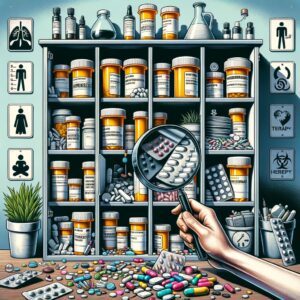
Your Health Journey Deserves the Best—Choose GreatLife Quality.
3. Recognizing the Signs and Symptoms of Prescription Drug Abuse
Identifying prescription drug abuse is crucial for timely intervention and prevention of further harm. The signs and symptoms of abuse can be physical, behavioral, and psychological, often varying depending on the specific medication involved.
Physical Indicators: Physical signs may include unusual changes in appearance, such as weight fluctuations, bloodshot eyes, or persistent drowsiness. Individuals abusing stimulants might exhibit increased energy, elevated heart rate, or dilated pupils, whereas those misusing opioids may show constricted pupils, slowed breathing, or impaired coordination. Frequent nosebleeds can be a sign of snorting certain medications, and unusual marks or burns on the skin may indicate injection misuse.
Behavioral Changes: Abrupt changes in behavior are significant indicators of potential abuse. These may manifest as increased secrecy, isolation from family and friends, or a decline in performance at work or school.
Individuals might neglect responsibilities, exhibit erratic behavior, or engage in risky activities. There may also be sudden financial difficulties, such as borrowing money without a clear reason or resorting to theft to obtain funds for drugs.
Psychological Symptoms: Abuse can lead to significant psychological distress. Individuals may experience mood swings, increased anxiety, depression, or paranoia. There may be a noticeable decline in motivation, resulting in a loss of interest in previously enjoyed activities. Cognitive impairments, including memory problems and difficulty concentrating, are also common.
Social Indicators: Changes in social circles can be a red flag, as individuals may begin associating with others who use drugs. Legal issues or conflicts with loved ones often accompany substance abuse. Additionally, the misuse of prescription drugs may lead to neglecting personal hygiene and appearance.
Observable Patterns: Frequent requests for early refills, doctor-shopping (visiting multiple healthcare providers to obtain prescriptions), and possessing multiple prescriptions from different pharmacies are key indicators of abuse. Monitoring prescription use and being aware of these signs can aid in early detection and intervention, ultimately mitigating the adverse effects of prescription drug abuse.
4. Impact on the Brain and Body: Short-Term and Long-Term Effects
Prescription drug abuse exerts significant influence on both the brain and the body, manifesting a range of short-term and long-term effects that can compromise an individual’s health and functionality.
Short-Term Effects: The immediate consequences of abusing prescription medications vary depending on the class of drug involved. Opioids, for example, can lead to euphoria, drowsiness, and respiratory depression, while stimulants may cause heightened alertness, increased heart rate, and elevated blood pressure.
Central nervous system depressants, such as benzodiazepines, can result in impaired coordination, memory lapses, and reduced anxiety. These acute effects not only pose risks of accidental injury and overdose but also impair cognitive and motor functions, increasing the likelihood of accidents and risky behaviors.
Long-Term Effects: Prolonged abuse of prescription drugs can lead to enduring changes in brain chemistry and structure. Chronic use of opioids may result in physical dependence, tolerance, and altered pain perception.
Stimulant abuse is associated with cardiovascular issues, including hypertension and arrhythmias, as well as neuropsychiatric problems like anxiety, depression, and cognitive deficits. Extended use of benzodiazepines can cause persistent memory impairment, increased risk of developing dementia, and severe withdrawal symptoms upon discontinuation.
Beyond neurological impacts, prescription drug abuse adversely affects various bodily systems. The gastrointestinal system may suffer from issues such as constipation and nausea, particularly with opioid use. The endocrine system can be disrupted, resulting in hormonal imbalances and reproductive health issues. Additionally, immune function may be compromised, increasing susceptibility to infections and illnesses.
Psychologically, sustained abuse often exacerbates mental health disorders, creating a vicious cycle of dependency and psychological distress. Socially, individuals may experience strained relationships, employment difficulties, and legal problems as a result of their substance misuse.
Overall, the impact of prescription drug abuse is multifaceted, with both immediate and enduring repercussions that necessitate comprehensive approaches to prevention, treatment, and support.
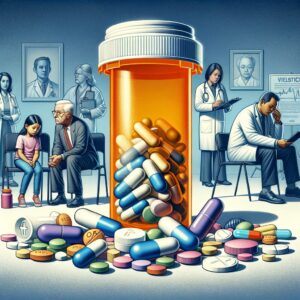
Say Goodbye to Fatigue—Feel the GreatLife Energy Difference.
5. Causes and Risk Factors: Why Prescription Drug Abuse Occurs
Prescription drug abuse is a multifaceted issue influenced by a combination of psychological, social, biological, and environmental factors. Understanding these causes and risk factors is crucial for developing effective prevention and intervention strategies.
Psychological Factors: Individuals may misuse prescription medications to self-medicate for underlying mental health conditions such as depression, anxiety, or post-traumatic stress disorder. The desire to alleviate psychological distress can drive individuals to seek relief through substances that alter mood or perception.
Social Influences: Peer pressure and the desire to fit in can contribute to the misuse of prescription drugs, particularly among adolescents and young adults. Additionally, high-stress environments, whether in academic settings, workplaces, or personal relationships, can lead individuals to turn to medications as a coping mechanism.
Biological and Genetic Predisposition: Genetic factors can play a significant role in an individual’s susceptibility to substance abuse. A family history of addiction increases the risk of prescription drug abuse, suggesting that genetic makeup may influence how individuals respond to these medications.
Environmental Factors: The availability of prescription drugs greatly impacts the likelihood of abuse. Overprescription by healthcare providers, lax regulation, and easy access to medications such as opioids, benzodiazepines, and stimulants create an environment where misuse can flourish. Additionally, societal attitudes that stigmatize addiction can prevent individuals from seeking help, exacerbating the problem.
Personal History of Substance Abuse: Individuals with a history of substance abuse are more likely to misuse prescription medications. Previous experiences with addiction can lower inhibitions and increase the propensity to engage in risky behaviors related to drug use.
Medical Conditions and Pain Management: Chronic pain patients may develop dependencies on pain relievers prescribed for legitimate medical reasons. The transition from legitimate use to abuse can occur when tolerance builds, leading individuals to consume higher doses or seek additional medications to achieve the desired effect.
Economic and Socioeconomic Factors: Financial stress and limited access to healthcare resources can contribute to prescription drug abuse. Individuals facing economic hardships may use medications as a form of escape or due to inadequate management of medical and psychological needs.
In summary, prescription drug abuse arises from a complex interplay of individual, social, and environmental factors. Addressing these underlying causes is essential for reducing the prevalence of misuse and its associated consequences.
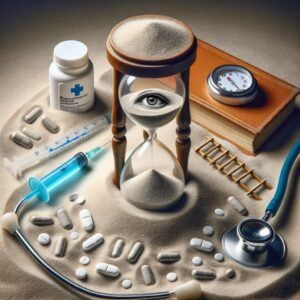
Say Yes to Health, Wealth, and Purpose—Join the GreatLife Revolution.
6. Treatment Options: Exploring the Two Main Types of Prescription Drug Abuse Treatments
Effective treatment for prescription drug abuse typically encompasses two primary approaches: pharmacological interventions and behavioral therapies. These methods are often integrated to provide a comprehensive strategy tailored to the individual’s specific needs.
Pharmacological Interventions involve the use of medications to manage withdrawal symptoms, reduce cravings, and treat any co-occurring mental health disorders, such as depression or anxiety. Methadone, buprenorphine, and naltrexone are commonly prescribed for opioid dependence, helping to stabilize brain chemistry and prevent relapse.
Additionally, medications like clonidine may be used to alleviate withdrawal symptoms, making the detoxification process more tolerable. The use of pharmacotherapy is essential in addressing the physiological aspects of addiction, thereby enhancing the effectiveness of other treatment modalities.
Behavioral Therapies encompass a range of counseling and psychological support strategies aimed at modifying the patient’s attitudes and behaviors related to drug use. Cognitive Behavioral Therapy (CBT) is widely utilized to help individuals recognize and change maladaptive thought patterns and behaviors that contribute to substance abuse.
Motivational Interviewing (MI) is another effective approach that enhances a patient’s motivation to engage in treatment and pursue recovery goals. Additionally, contingency management provides tangible rewards for maintaining sobriety, thereby reinforcing positive behaviors.
Group therapy and support groups, such as Narcotics Anonymous, offer a community-based support system that fosters accountability and mutual encouragement among individuals undergoing treatment.
Combining pharmacological interventions with behavioral therapies typically yields the best outcomes, addressing both the physical dependence and the psychological factors underlying prescription drug abuse.
This integrative approach not only helps individuals achieve sustained recovery but also supports them in developing the skills necessary to maintain long-term sobriety. Moreover, personalized treatment plans that consider the unique circumstances and needs of each patient are essential in enhancing the effectiveness of these treatment options. By leveraging both pharmacological and behavioral strategies, healthcare providers can offer a robust framework for overcoming prescription drug abuse and promoting overall well-being.
7. Preventative Measures and the Role of Healthcare Providers in Combating Prescription Drug Abuse
Preventing prescription drug abuse requires a multifaceted approach, with healthcare providers playing a pivotal role in mitigating this pervasive issue. One of the primary preventative measures is the implementation of responsible prescribing practices.
Healthcare professionals must adhere to established guidelines, such as those provided by the Centers for Disease Control and Prevention (CDC), to ensure that opioids and other high-risk medications are prescribed only when absolutely necessary and in the lowest effective doses.
Utilizing prescription drug monitoring programs (PDMPs) can aid providers in tracking patients’ prescription histories, thereby identifying potential misuse or red flags indicative of abuse.
Education is another critical component in prevention efforts. Healthcare providers should educate patients about the risks associated with prescription medications, including the potential for dependence and adverse effects. Clear communication regarding the proper use, storage, and disposal of medications can reduce the likelihood of misuse. Providers should also inform patients about alternative pain management strategies and non-pharmacological treatments when appropriate.
Screening and early identification of at-risk individuals are essential preventative strategies. Routine assessment for substance use disorders, mental health conditions, and socioeconomic factors that may contribute to drug abuse can help in early intervention. Implementing standardized screening tools during patient visits allows for the timely detection of potential abuse.
Moreover, healthcare providers should foster a collaborative environment by working closely with pharmacists, mental health professionals, and addiction specialists. This interdisciplinary approach ensures comprehensive care for patients and facilitates the sharing of critical information that can prevent prescription drug misuse.
Safe storage and disposal of medications should be emphasized to patients to minimize the availability of unused drugs that could be diverted for non-medical use. Providers can offer resources and information on community take-back programs and other safe disposal methods.
Lastly, continuous professional development and training in pain management, addiction medicine, and the latest evidence-based practices enable healthcare providers to stay informed and effectively address the challenges associated with prescription drug abuse. By adopting these preventative measures, healthcare providers can significantly contribute to reducing the incidence of prescription drug abuse and enhancing overall public health.
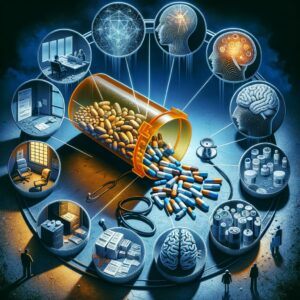
Take Control of Your Wellness and Wealth—Start Your GreatLife Today.
Conclusion:
Addressing prescription drug abuse requires a multifaceted and collaborative approach that encompasses education, responsible prescribing, early detection, and comprehensive treatment strategies. By identifying high-risk medications and recognizing the signs and symptoms of abuse, healthcare providers, families, and communities can intervene promptly to prevent the escalation of misuse.
Understanding the profound short-term and long-term effects on both the brain and body underscores the urgency of tackling this issue with effective treatment options and supportive measures. Moreover, addressing the root causes and risk factors—such as psychological distress, social influences, and environmental availability of medications—can significantly reduce the prevalence of prescription drug abuse.
Ultimately, the concerted efforts of healthcare professionals, policymakers, and society at large are crucial in combating prescription drug abuse, ensuring the well-being of individuals, and fostering a healthier, more resilient community.
